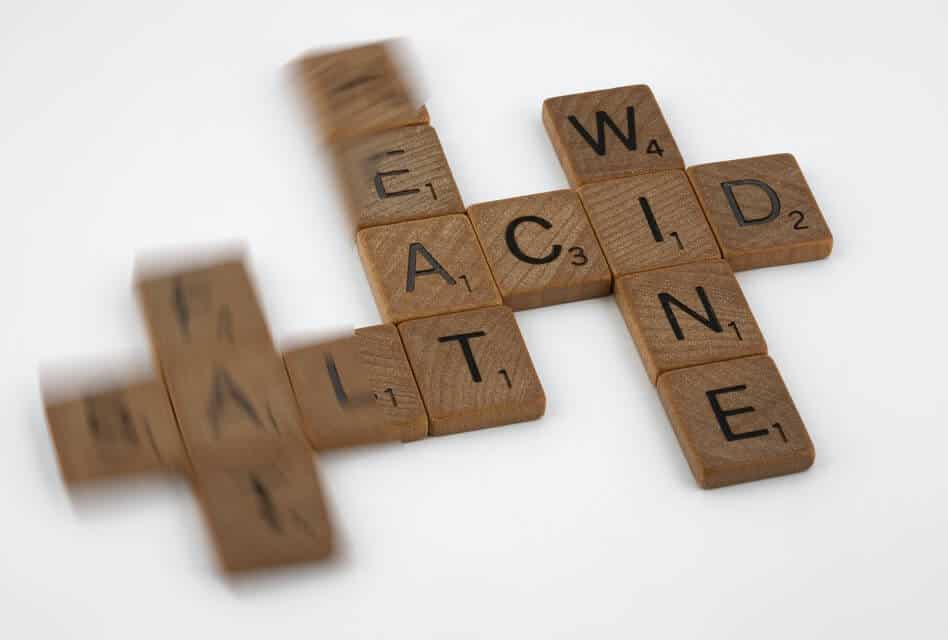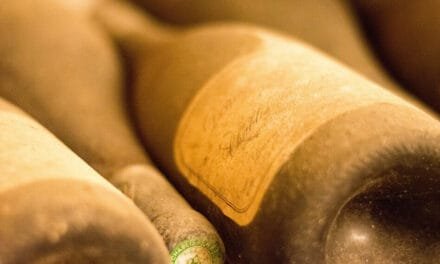Wine has plenty of characteristics that determine its quality and its taste. Among them, wine acidity is one of the most important. And thus, experts pay special attention to a wine’s acid levels and have created many terms to describe it. But why is acidity in wine important? And where does it come from?
Acidity in wine comes from the grapes used to make it. In these grapes, it functions as a preservative that helps keep the fruits healthy. In wine, acidity also helps prevent spoilage. Besides, it balances a wine and gives it sour notes and a perceivable freshness.
There is not just one acid, though. Actually, there are four different types of acidity in wine. In the following paragraphs, we will discuss these types, why they are important, and how acidity affects wine.
WHY IS ACIDITY IN WINE IMPORTANT?
Acidity is a crucial component of wine and a deciding factor for its quality. However, there is no specific level that is perfect for any wine. Vintners always have to balance acidity and other characteristics such as alcohol, sweetness, tannins, and aroma.
Mismatches can result in very unpleasant wines. If the acidity level is too low, the wine tastes dull, and it lacks the refreshing sensation that makes especially many white wines special. On the other hand, too much acidity makes a wine taste tart because it coats other flavors.
Besides, acidity determines a wine’s aging potential. In combination with sulfur, it protects the wine from harmful bacteria that might cause it to spoil. Without it, wine aging wouldn’t be possible.
Let us have a look at the four types of acidity in wine and what exactly they do.
Tartaric Acid
The most important acid in wine is tartaric acid. It is very durable, and that is why experts call it a fixed acid. It is a crucial factor in stabilizing flavors and also wine color. However, not all of it is soluble. Sometimes, you might see tiny crystals in wine that look like shards of glass. These crystals are also called “wine diamonds”, and they are insoluble tartaric acids.
Malic Acid
The second important type of acid is malic acid. It keeps vines and grapes (and many other fruit trees and bushes) healthy, especially when they are young. When the vines get older, their grapes typically contain less malic acid.
Malic acid is perceivable in wine. You can sense it as green fruit flavors, particularly apple or pear notes.
Sometimes, wine can contain too much malic acid. In this case, vintners let the wine undergo a process called malolactic fermentation. During this process, malic acid is transformed into lactic acid.
Lactic Acid
Lactic acid is mainly created during the fermentation process, not only in wine but also in food products like yogurt, sauerkraut, or sourdough.
Winemakers intentionally encourage the creation of lactic acid by adding special bacteria to the wine that start malolactic fermentation. The reason is that lactic acid gives the wine a buttery, creamy mouthfeel and contributes to its complexity.
Citric Acid
Wines typically have only a little bit of citric acid, and winemakers usually add it artificially after the fermentation to increase the total level of acidity. Nevertheless, it is a relevant type of acid because it has a very aggressive taste.
WHAT DETERMINES ACIDITY IN WINE?
The level of acidity in wine depends on multiple factors. Vintners can influence some but not all of them. These are the factors that determine acidity in wine:
- Grape Variety: Some varietals naturally have a higher acidity level than others. By selecting the variety, vintners can predetermine how acidic the resulting wine will be.
- Soil: The soil in which vines are planted can alter grapes’ acidity. Dense soils, for instance, can hold more water that keeps the vines’ roots cool. And this leads to higher acidity levels in the grapes.
- Climate: The same varietal has a higher level of acidity when grown in a region with rather low temperatures. That is the case for most Old World wine countries such as France, Germany, or Italy. In warmer places in the New World, including Australia, South Africa, or California, the same varietal would have less acidity.
- Ripening Stage: The longer grapes stay on the vines, the more sun-hours they will enjoy and the riper they will be at harvesting time. And the riper they are, the less acidity they will have. So vintners can alter the grapes’ acidity by setting an earlier or later harvesting date.
- Aging: When wine ages in oak barrels, its acidity changes. Exposure to oxygen starts a process called malolactic fermentation. During this process, the malic acid is transformed into lactic acid, which is less dominant. As a result, the overall level of acidity decreases and becomes perceivably softer.
- Addition during Winemaking: Vintners can add acid artificially, typically after the primary fermentation. Reasons for doing this range from changing the wine’s color to altering aromas to optimizing balance.
WHAT IS THE DIFFERENCE BETWEEN ACIDITY AND TANNINS IN WINE?
Both tannins and acids are natural components in grapes. But they contribute very different characteristics.
Acidity is what contributes sour notes and a bit of sharpness to the wine’s flavor profile. It’s mouthwatering and refreshing and makes the wine taste bright and crisp.
Tannins are quite the opposite: They create a puckering, mouth-drying sensation that many wine lovers enjoy. Also, they add subtle bitter notes to a wine.
Both acid and tannins are necessary for an excellent wine. They balance each other but also sweetness and alcohol to create a well-rounded drinking experience. Also, they give the wine the ability to improve when aging in oak barrels.
DOES WINE ACIDITY CHANGE WITH AGE?
Technically, the level of acidity in wine does not change while it ages. So if you measure it before and after aging, the result will be more or less the same.
However, your perception when drinking the wine will change. As wine ages, aggressive acidic and tannic notes soften, so it becomes a more balanced and enjoyable drinking experience.
IS THERE WINE WITHOUT ACIDITY?
There is no wine without acidity. As it is a natural and necessary component for grape health and wine preservation, making zero-acidity wines is impossible.
But although all wines contain acid, you might not always sense it. Other characteristics such as sweetness, tannins, or single aromas can be so intense that they mask the acidity in wine.
WINE ACIDITY BY VARIETAL
As mentioned before, different grape varieties naturally have different acidity levels, even when grown under the same conditions. We will discuss the most and least acidic varietals and the wines made from them in the following paragraphs.
Red Wine with High Acidity
In general, even the most acidic red wines have less perceivable acidity than whites. Nevertheless, you can experience differences when comparing various reds to each other.
These red wines are high in acidity:
- Barolo
- Nebbiolo
- Pinot Noir
- Red Burgundy
- Sangiovese
- Tannat
Red Wine with Low Acidity
Red wines that are comparably low in acidity are:
- Cabernet Sauvignon
- Dolcetto
- Grenache
- Merlot
- Tempranillo
The same is true for off-dry red sparklers like Lambrusco and sweet dessert wines such as Ruby and Tawny Port wines or Marsala.

White Wine with High Acidity
Light- and medium-bodied white wines often are very acidic, especially when they come from an Old World wine country such as France or Germany. Among them are:
- Chenin Blanc
- Grüner Veltliner
- Riesling (dry)
- Sauvignon Blanc
- Verdelho
Many dry sparkling wines, including Champagne or Prosecco, are high in acidity as well.
White Wine with Low Acidity
If you are looking for a white wine with low acidity, you should focus on New World wines, especially oaked styles:
- Chardonnay from California or Australia
- Gewürztraminer
- Müller-Thurgau
- Muscat
- Semillon
- Viognier
Most sweet whites are only slightly acidic, too. Check out late-harvest wine, ice wine, or sweet sparklers such as Moscato d’Asti. Spanish Sherry and other fortified white wines usually belong to this category as well.
Be aware that even low-acidity whites usually feature more intense acidic notes than most reds.
HOW TO MEASURE WINE ACIDITY
Acidity in a wine can be measured in two ways. One is the pH value, which stands for “potential of hydrogen”. The pH scale ranges from 0 to 14. Liquids with a pH value of 7 are considered neutral. Those with a lower level are “acidic”, and those with a higher level are “basic” or “alkaline”.
The easiest way to determine the pH value is a litmus test. When put into the wine, this paper stripe will change its color based on the wine’s acidity. As paper stripes aren’t the most reliable tests, winemakers tend to use other, more sophisticated methods such as digital pH meters.
Another measure is the TA value (total acidity). It quantifies the acid content in grams per liter (short: g/L) of wine or as a percentage. For instance, 7 g/L equals 0.7%. As for pH, vintners can use simple test kits or digital devices like an acidity titrator to determine their wine’s TA-value.
HOW TO DESCRIBE WINE ACIDITY
Wine lovers use a wide variety of words to describe acidic notes in the wine. Some of them have a positive connotation to express that a wine has a good, well-balanced level of acidity; others have a negative meaning and are used to describe a mismatch of the wine’s characteristics.
Positive Terms
- Crisp: Dry wine with perceivable acidity with only mild fruit flavors.
- Brisk: Unoaked wine with a good level of acidity.
- Fresh: Acidic wine that often has flavors of green or citrus fruits.
- Bright: Describes acidic wines with a watery consistency and a light color.
- Racy: Wine with lively acidity and a relatively light body.
- Zesty: Another term to describe light-bodied wines with a perceivable acidity level.
Negative Terms
- Green: Used for overly acidic wines.
- Tart: Another term to describe acidity that is too dominating.
- Lean: For wines with a good acidity level but lacking fruity aromas.
- Flabby: Wines that lack acidity.
- Dull: Similar meaning as flabby.
PAIRING FOOD AND ACIDIC WINES
Wines that are high in acidity are more food-friendly than low-acidity wines. So you have more options to create delicious matches. Of course, the best food and wine pairings depend on other factors such as wine body, sweetness, tannins, and aromas. Nevertheless, acidity gives you a rough idea of the foods that match it:
- In general, wine should have at least an equal level of acidity as the food. Otherwise, it might taste flat and boring. Typically, a wine that is a bit more acidic than the meal is even better. For instance, a pasta dish with tomato sauce requires an acidic wine to match the tomatoes’ acidity.
- Fatty and creamy dishes call for high-acidity wines, too. The same is true for meals that contain a lot of cheese. The acid helps to cut through the savory texture and rounds out the flavors of both food and wine.
- Acidy is also a good counterplayer for fried foods. Acidic sparkling wines can even stand very spicy fried dishes, for instance, from Asian cuisine.
- Another great match is salty food because the wine’s acids balance the saltiness on the palate. Fish is a fantastic example: Just like squeezing a bit of lemon juice over your dish, you can enjoy it with a glass of acidic wine. Salty cheeses also are delicious with acidic wines.
FINAL WORDS
Acidity in wine is crucial. It determines the balance and, thus, the quality of wine, and it helps prevent it from spoiling. Without acidity, there would be no wine. So even if you dislike the sour notes it imposes on wine, you might want to toast to its presence when opening your next bottle.






